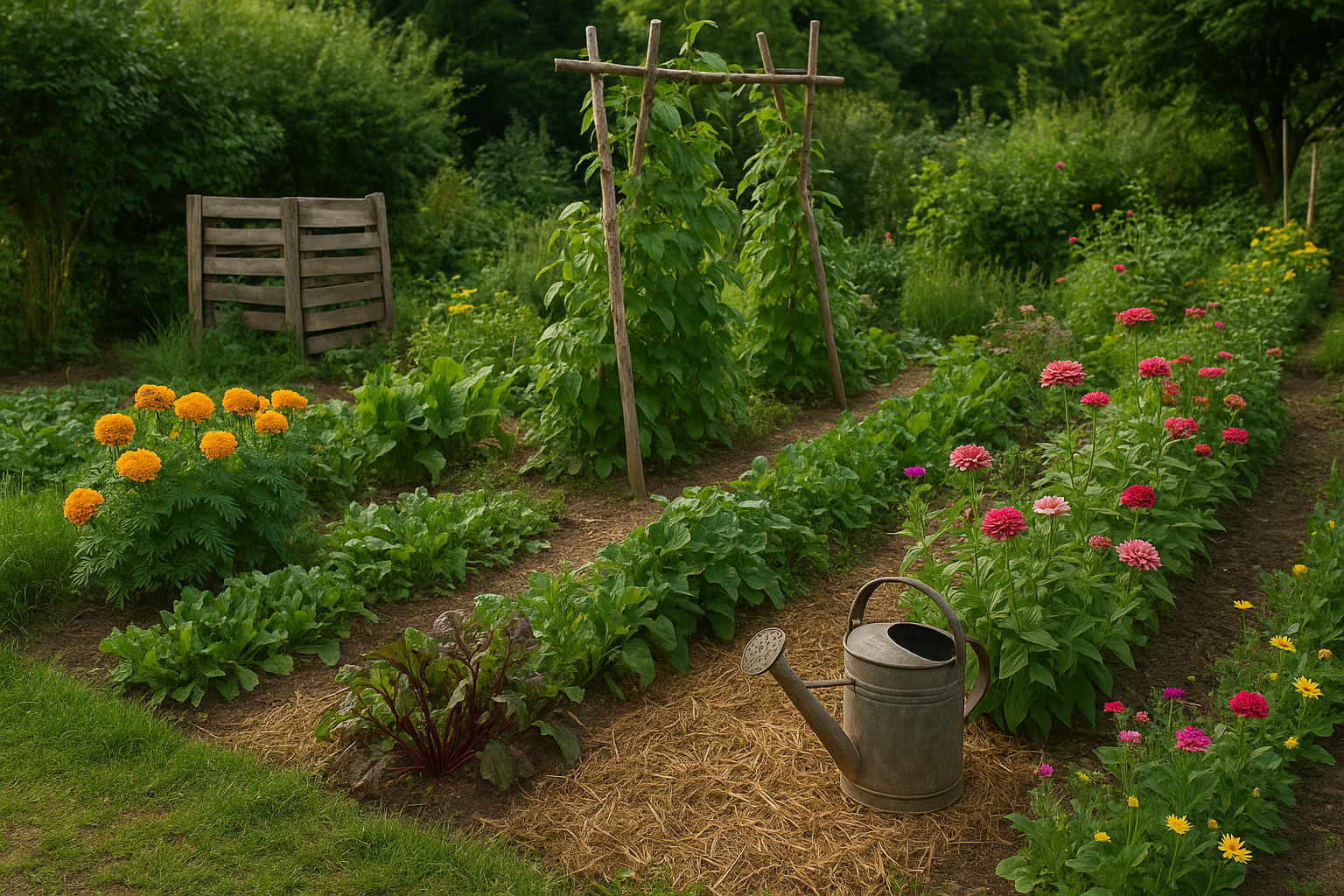Having a beautiful garden doesn’t require a big budget — just a little creativity, resourcefulness, and care. With the right approach, even gardeners with minimal resources can create and maintain a lush, vibrant outdoor (or indoor) space. This article will walk you through proven, low-cost gardening strategies to help you grow and sustain a healthy garden, no matter your financial situation.
Start with the Right Plants
Choosing the right plants from the start saves money and effort in the long run.
Characteristics of budget-friendly plants:
- Low maintenance
- Drought-tolerant
- Pest-resistant
- Native to your region (require fewer resources)
Good examples:
- Marigolds
- Lavender
- Succulents
- Zinnias
- Basil, mint, and rosemary (also useful in cooking)
- Spider plants and pothos (for indoor gardening)
These plants thrive with minimal input and are often available cheaply or even for free through swaps.
Make Your Own Compost
Compost is a gardener’s gold — and it’s free if you make it at home.
Compostable items include:
- Vegetable and fruit scraps
- Coffee grounds and tea bags
- Eggshells
- Grass clippings and leaves
- Shredded paper and cardboard (no ink or plastic)
Avoid meat, dairy, and oily food scraps to prevent odor and pests.
Compost tips:
- Use a bin, bucket, or corner of your yard
- Mix green (wet) and brown (dry) materials
- Stir occasionally for aeration
- In 6–12 weeks, you’ll have rich, dark compost
Use it to enrich soil, feed your plants, and reduce reliance on store-bought fertilizers.
Reuse and Repurpose Materials
Instead of buying gardening tools and décor, get creative with what you already have.
Ideas:
- Use old utensils as plant markers
- Turn broken furniture into planting beds or trellises
- Use milk jugs, cans, and buckets as planters
- Hang plastic bottles for vertical gardens
- Repurpose old wood to build raised beds or supports
These DIY solutions not only save money, but they also reduce waste.
Collect Rainwater
Water bills can add up — especially in the summer. Save on this vital resource by collecting rainwater.
How to collect:
- Place buckets or barrels under gutters
- Use an old trash can with a fine mesh on top to keep debris out
- Store in the shade to reduce evaporation
- Use this water for outdoor plants or non-edible indoor plants
If rain is scarce, reuse water from rinsing vegetables or leftover from boiling eggs or pasta (after cooling).
Use Homemade Fertilizers
Fertilizer helps plants grow strong, but store-bought options can be costly.
Affordable DIY options:
- Banana peel tea (potassium boost)
- Eggshells (calcium source)
- Used coffee grounds (nitrogen-rich)
- Compost tea (made by soaking compost in water for a few days)
These options are just as effective and completely free.
Create a Maintenance Schedule
Staying organized helps you prevent plant loss — and wasted effort.
Suggested routine:
- Water in the early morning or late afternoon
- Inspect for pests and remove dead leaves weekly
- Rotate pots or beds to ensure even sun exposure
- Mulch every few weeks to retain moisture
- Track what you plant, how it grows, and what needs changing
A simple notebook or digital log can help track seasonal needs and performance.
Share, Swap, and Save Seeds
Plants don’t have to come from the store. Build a community-based approach to gardening.
Ways to save money:
- Swap cuttings or seeds with neighbors or online groups
- Collect seeds from your own plants
- Join local gardening clubs or events
- Visit community gardens — many offer free or low-cost resources
Seed saving is especially valuable for herbs, lettuce, peppers, and tomatoes.
Mulch with Natural Materials
Mulching helps retain soil moisture, suppress weeds, and regulate temperature — and it doesn’t have to cost anything.
Free mulch options:
- Dried leaves
- Grass clippings
- Shredded newspaper
- Pine needles
- Straw or hay (if accessible)
Avoid dyed or chemically treated mulches unless you’re sure they’re safe for your garden.
Fight Pests Naturally
Skip expensive chemical sprays and go with natural, safe alternatives.
Eco-friendly pest control:
- Soapy water spray (aphids, spider mites)
- Neem oil (broad spectrum)
- Garlic or chili sprays (deterrents)
- Encourage beneficial insects like ladybugs
- Use crushed eggshells or copper strips to deter slugs
These options are not only cheap but also safe for children, pets, and pollinators.
Grow in Layers and Reuse Space
Maximize your garden’s productivity without needing more land.
Layering strategies:
- Use vertical gardens: shelves, ladders, hanging pots
- Grow fast-yield crops like radishes between slower-growing ones
- Companion plant to get more from small beds
- Use containers, window boxes, and wall-mounted planters
Even small balconies and patios can yield lots of produce or blooms with clever layout planning.
A Thriving Garden is Within Reach — No Matter Your Budget
A beautiful, productive garden is entirely possible without a big investment. By reusing what you have, leaning into community support, and applying a few DIY techniques, you can grow flowers, herbs, and vegetables that bring joy and nourishment all year round.
The key is consistency, creativity, and a little patience — nature takes care of the rest.
